
A study reveals that women around the globe make only 77 cents for every dollar that is earned by a man. This simply elucidates the global fight against unequal pay. The two terms that often come to mind with this context are - pay equity and pay equality.
Understanding these two terms and moreover understanding the difference between them is also simply very essential for businesses. They aim to address the pay disparities that we can see around the globe.
Since they are both such misunderstood terms, understanding them is essential to reduce the unfair pay pattern and biases observed in workplaces and make fair pay a reality, just like at CompUp.
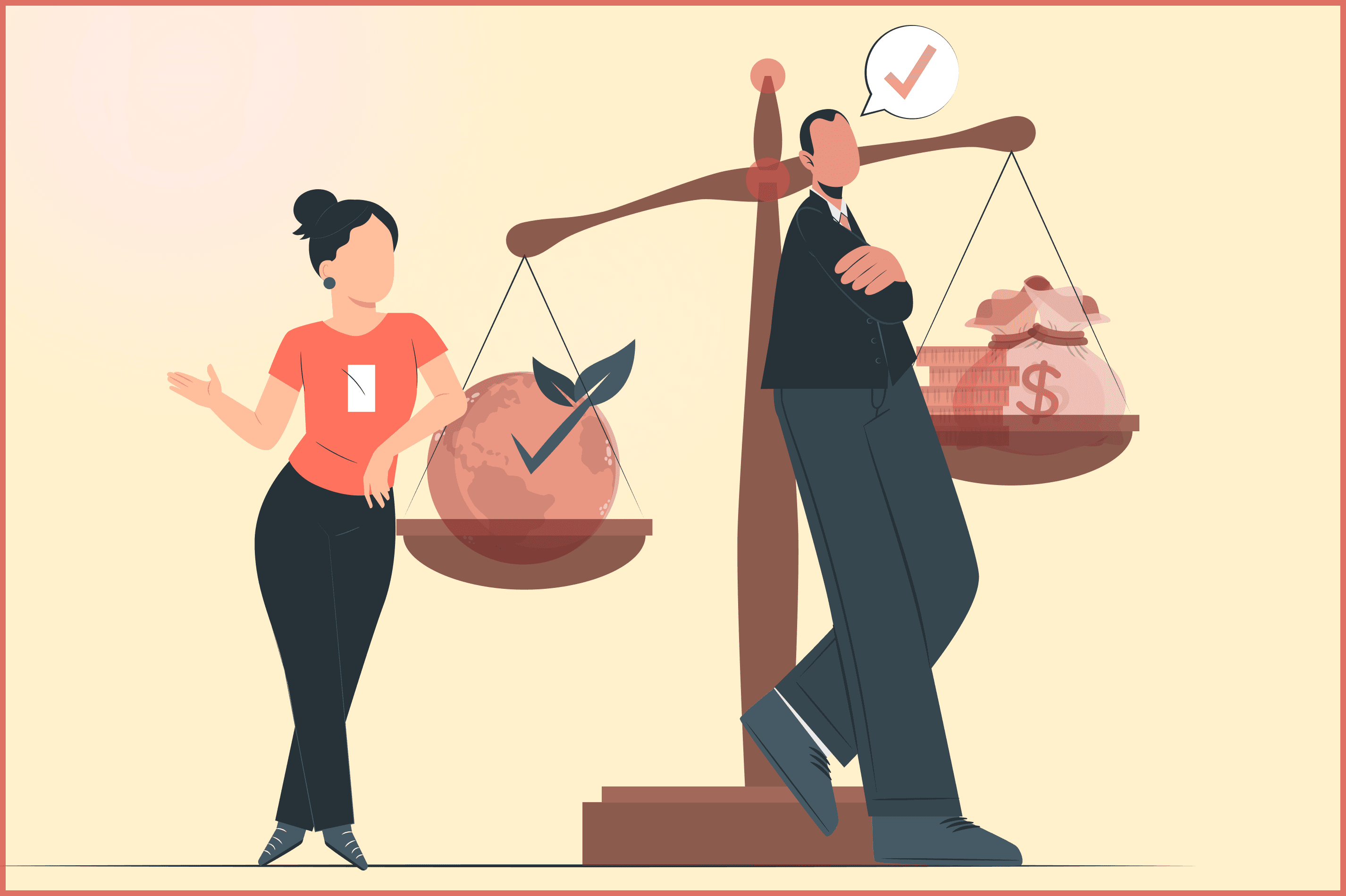
Pay equality means ensuring that all employees are treated the same when it comes to the payment that they receive for their jobs, irrespective of their gender, ethnicity, race or other personal characteristics that are viewed with a stereotypical mindset, which clearly is not the reality today.
So, any employees who are performing the same job roles must not face any gender pay gaps or other means of wage discrimination and have the same amount of pay or wages, considering everything under it ranging from their experience, performance more importantly and their qualifications.
For example, any two employees, let's say hired as graphic designers with similar experience and other skills sets and to perform the same job at the company, here it shouldn't matter that both the employees probably are different genders, irrespective of all that they should be able to receive identical salaries for the identical jobs they do.
Pay equity means it is not just restricted to ensuring equal pay for all rather fair compensation to all the employees as well. This equity analysis requires employers to understand the differences that are there in the responsibilities of different job roles, requirements and qualifications and their overall contribution to the eventual success of the company.
It includes -
Taking all of this into account helps be clear of what the fair compensation for the employee for the value of the job that they bring to the company will be. So, pay equity ensures that no job held by anyone is in any way undervalued and that such disparities in pay are diluted and free of historical biases we have all been restricted to.
So, what is the primary need for having a clearer understanding of these two terms in elaboration? Well, this need occurs from the actual need for wage fairness in the world and workplaces. People tend to use two of these concepts rather interchangeably, but they are different in what they are primarily dealing with as a concept. Such equity practices help even do comprehensive pay equity audits ensuring that compensation decisions are made rather strategically by keeping in mind the two concepts - Pay Equality and Pay Equity. And though they are not distinct concepts they are still different.
So, the key need to understand both of these concepts is to ensure that organizations can offer fair compensation without any gender wage gaps and a more inclusive work environment by focusing on pay equity as well as pay equality. Some job roles are simply underrepresented and not given the value they deserve. These concepts encourage a comprehensive approach for businesses to be able to make competent strategies in offering compensation and making fair pay a reality. It also further highlights the social responsibility in diluting wage discrimination in the different forms of compensation offered to employees.
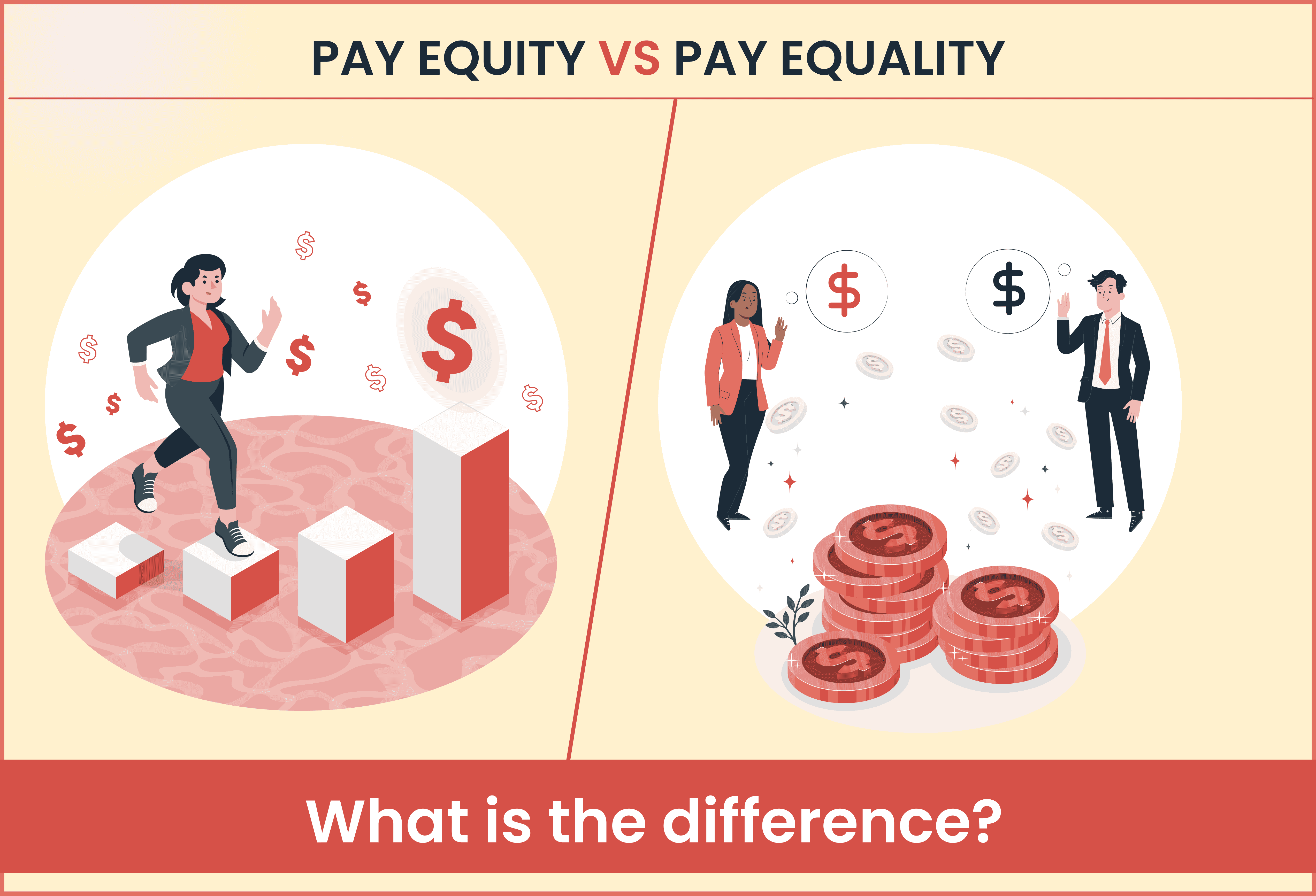
Pay Equality - Wage inequality does not take in consideration the level of skill an employee possesses. Wherein Pay Equality ensures that all employees irrespective of the gender they belong to, the race they are from, the ethnicity they are from, or any other stereotypical reason are given the same amount of pay for the same kind of work. Here, it doesn’t necessarily address the vantage point of how some jobs in an entirety tend to be undervalued. That no matter the basis of race, gender or other fair pay practices are keenly important.
Pay Equity - While this ensures that job roles are not subjected to systematic discrimination and that certain roles are not subjected to discrimination and being undervalued. This deep-rooted mindset of disrespect for certain job roles and the vantage point of it all is what is dealt with in the concept of Pay Equity and that every job has its own value and must be fairly compensated.
Pay Equality - the scope of fairness when it comes to pay equality which ensures that equal pay is given for the same job that people do. No means of gender bias even in leadership roles are tolerated through these equitable compensation practices.
Pay Equity - the scope of fairness when it comes to pay equity is to have reasonable pay given for jobs that hold an equal amount of value in a company. Even if these jobs are different. Making the broader concept of a more equitable workplace is the goal.
Pay Equality - The application of this occurs when people have identical job roles and responsibilities. The issue with salary disparities among such job roles are dealt with. Also, by providing a more transparent and fair pay system it would build clarity about their compensation to the employees.
Pay Equity - The application of this principle occurs when different roles of the job function that equally hold value and are compensated in a fair and equal manner. It will be highlighting fairness in compensation for all with all salary ranges.
Pay Equality - The inequity in pay here involves a direct means of discriminating against someone based on stereotypes for the same job roles they play in the company. No distinction with female and male employees or other such historical disparities or systematic pay disparities is tolerated and ensures a fairer workplace.
Pay Equity - The inequity in pay here involves correcting the imbalances in the society and the value associated to the job roles. Wherein different job roles tend to be undervalued while some dominate in certain locations around the world. Here the historical undervaluation of other job roles and other discriminatory employment practices are diluted making equal compensation for employees a reality.
To make equal pay a reality, businesses need reliable tools that can help them analyse and implement fair compensation practices for all job titles in a company. This also helps attract new employees to the company. CompUp can most certainly help you do just that: embrace diversity in your workplace and ensure pay equality. and inclusive workplaces. It plays a pivotal role in addressing such pay gaps and articulating ways to deal with them effectively.
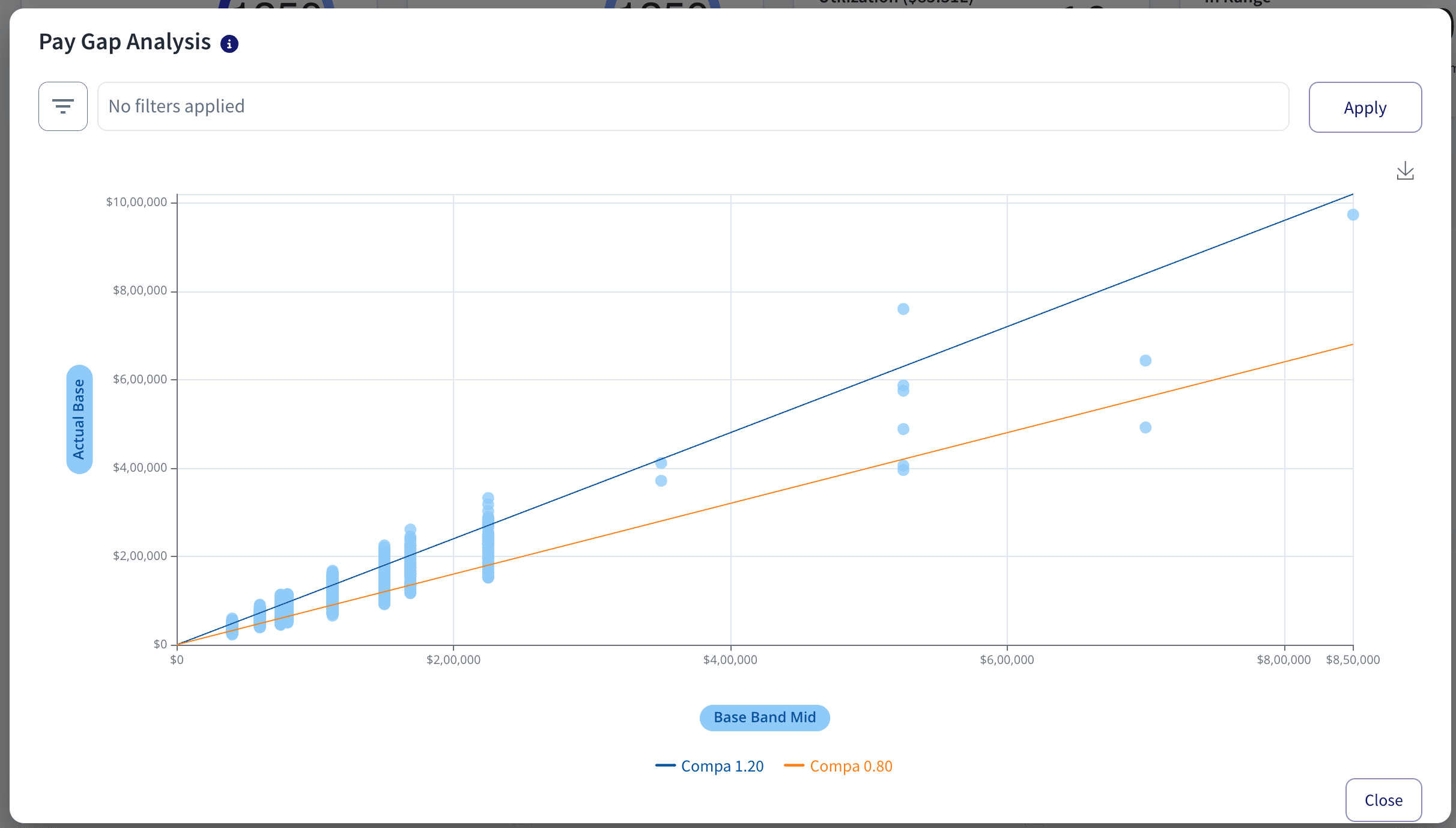
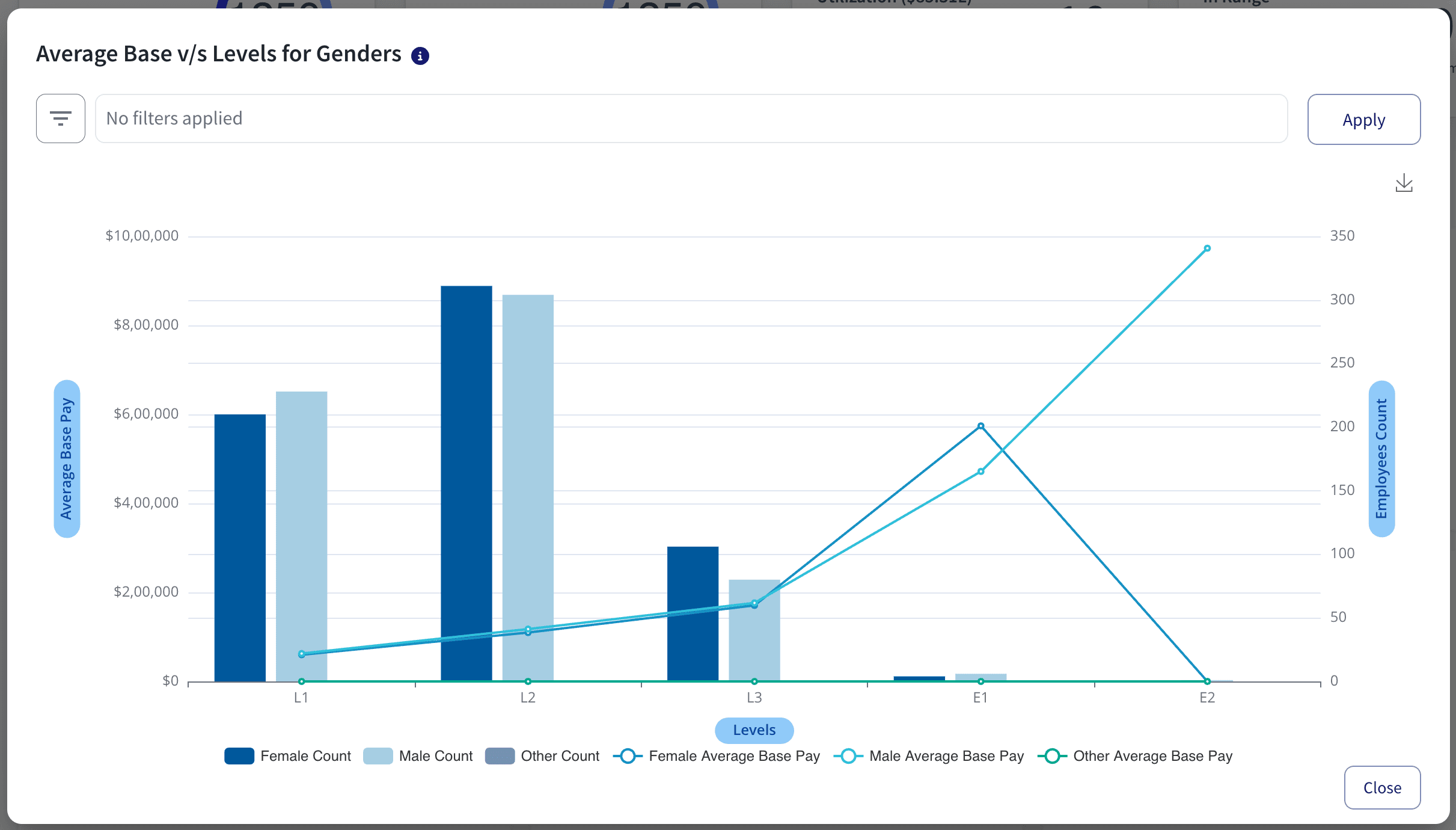
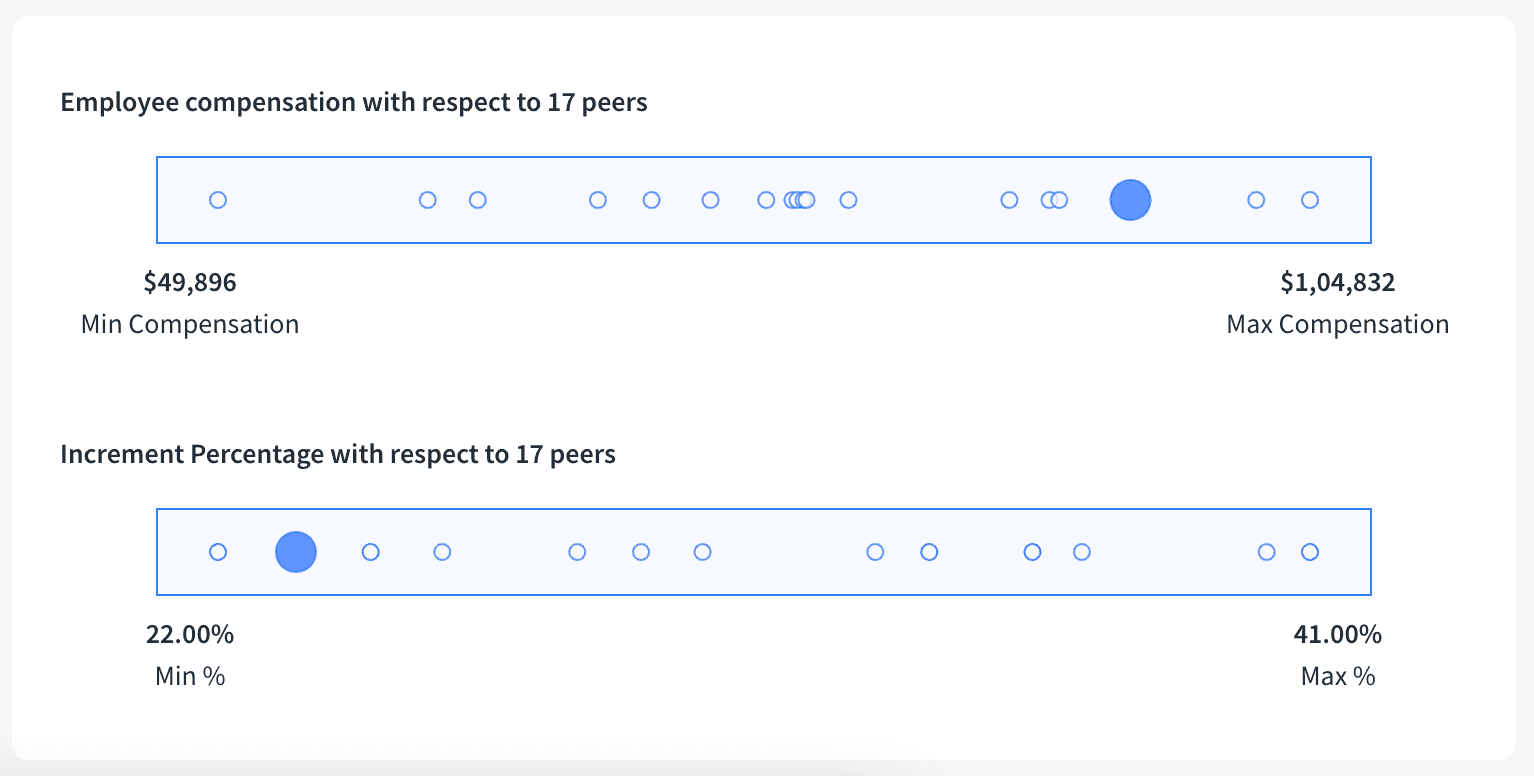
By leveraging tools like CompUp, businesses can take the guesswork out of fair compensation for employees at any job level and create pay structures that reflect both equality and equity, making the workplace more inclusive.
Both the terms pay equality and pay equity often are used interchangeably but in this article it's clear how they are different as principles. Disparities in compensation is not just unfair it also comes at the cost of employee morale being down as well. So, adding equal and fair pay to your compensation strategy helps with just that. Both principles are necessary to close the wage gap and ensure that all employees are fairly compensated.
Try the platform today to understand how CompUp can help you make data-driven and bias-free pay decisions.
Revolutionizing Pay Strategies: Don't Miss Our Latest Blogs on Compensation Benchmarking